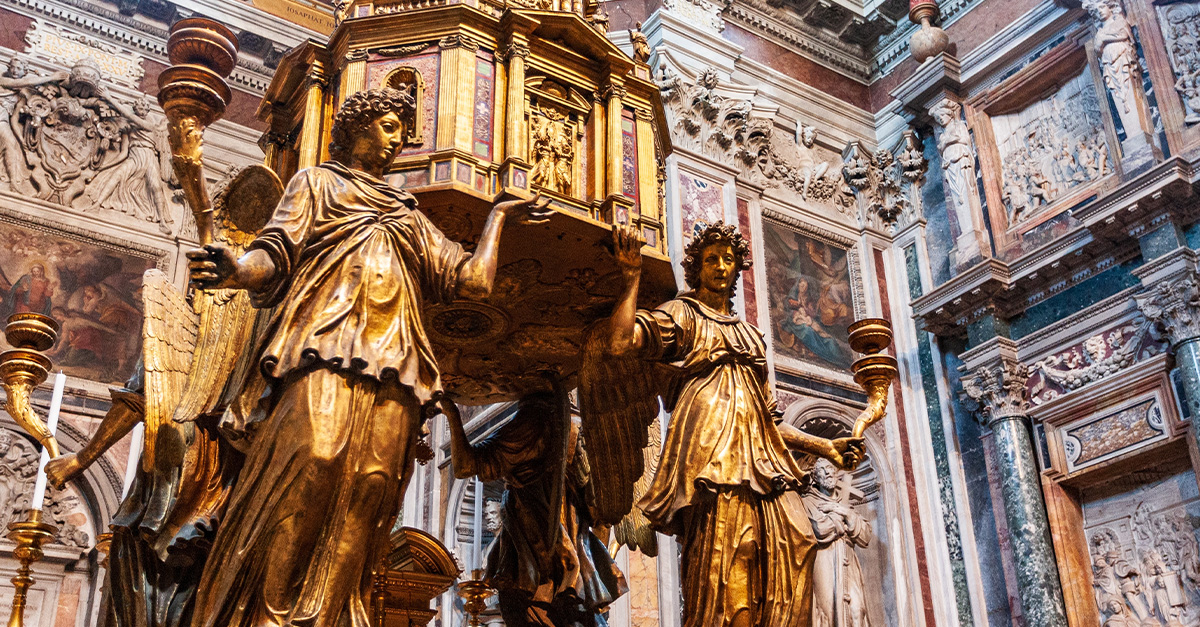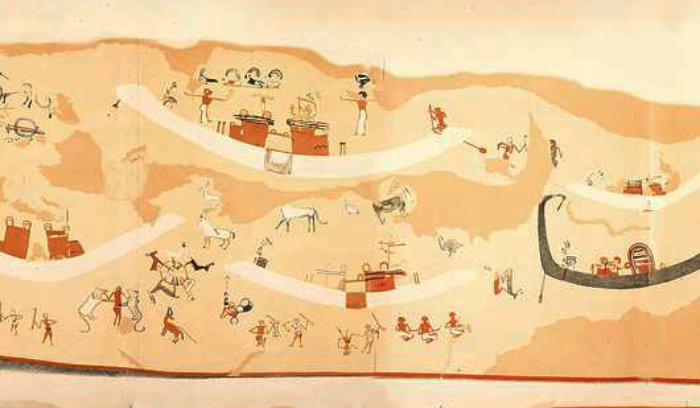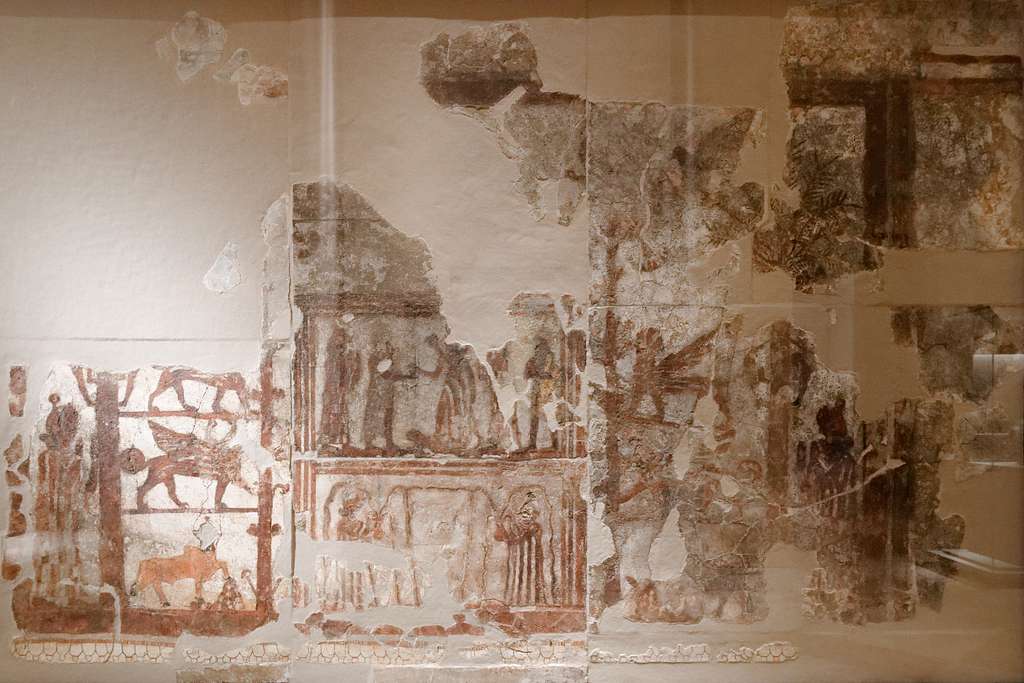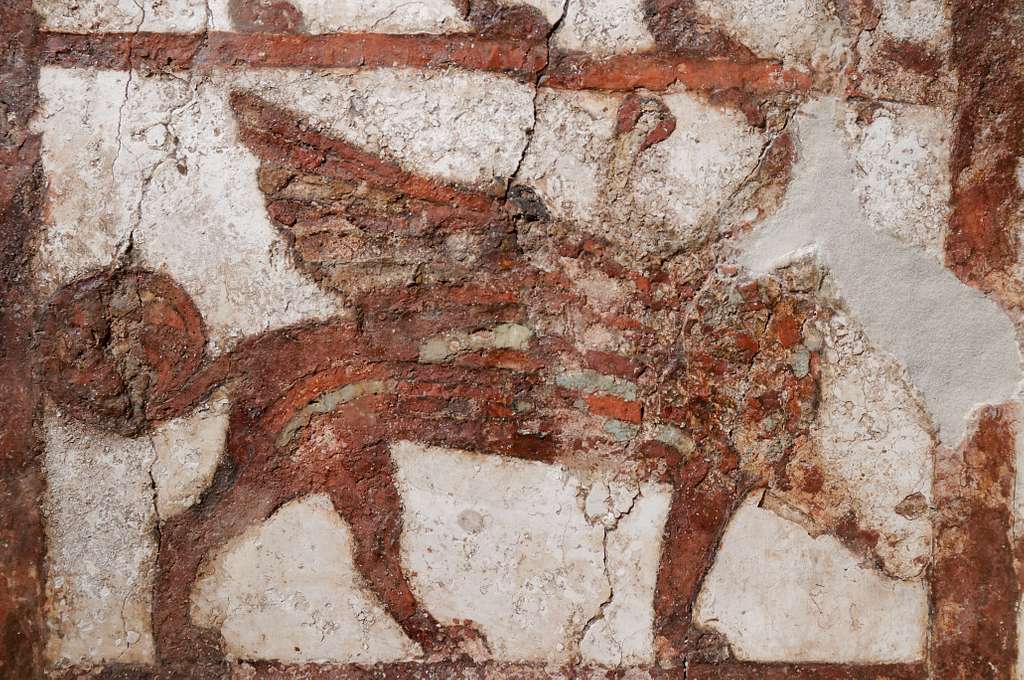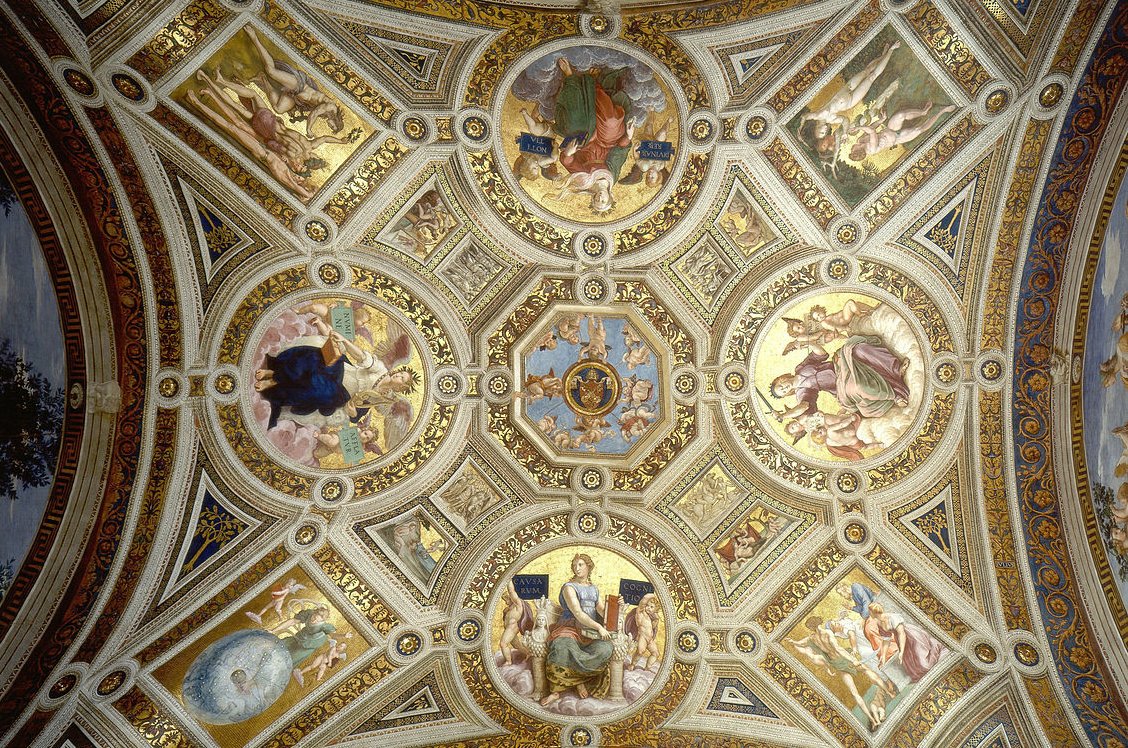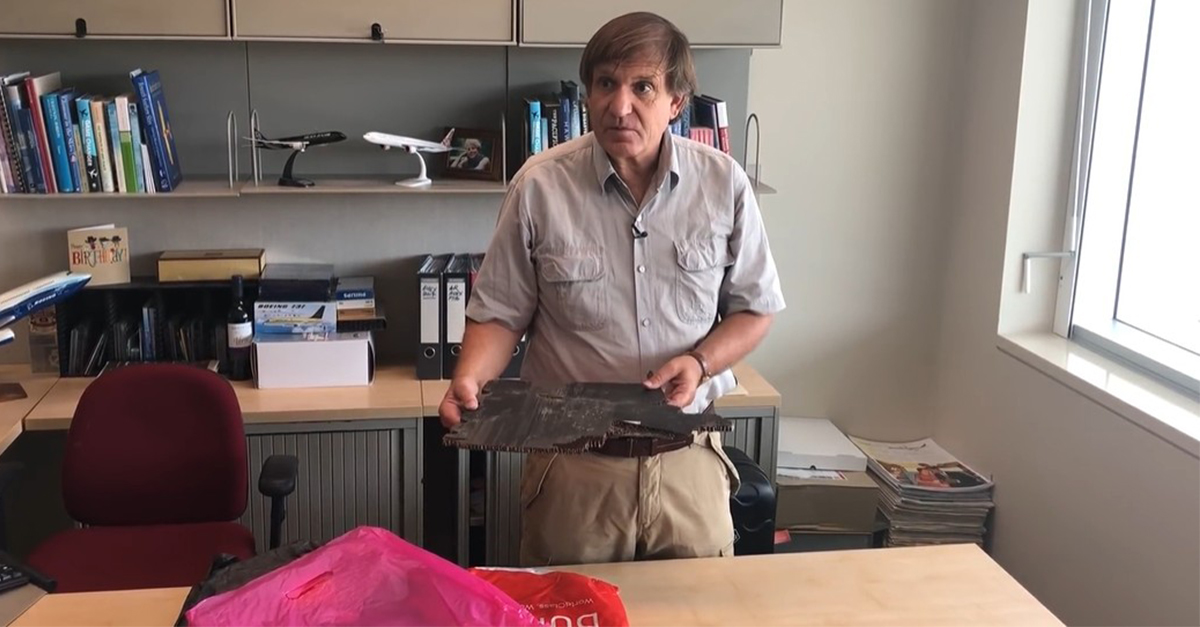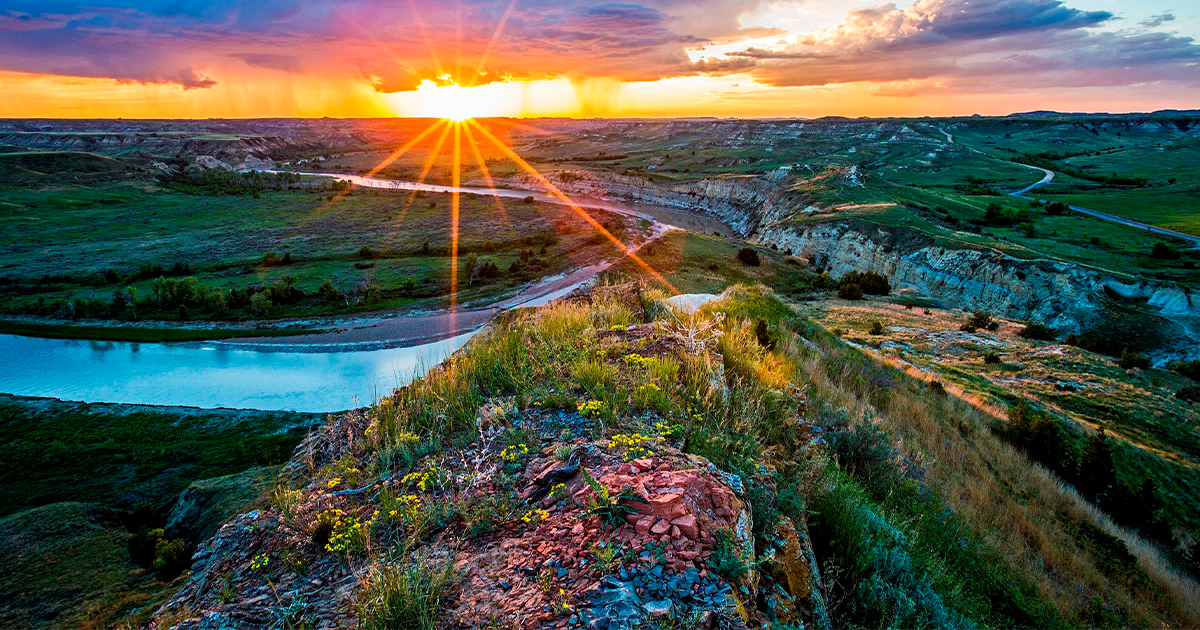The World's Most Famous Fresco Paintings
Some of the world's greatest artists created incredible works known as frescoes. Frescoes are created using an ancient technique: watercolor paint applied to wet plaster. The paint seeps into the plaster and becomes fixed once it dries. Let's explore the history of frescoes and some of the world's most famous fresco paintings.
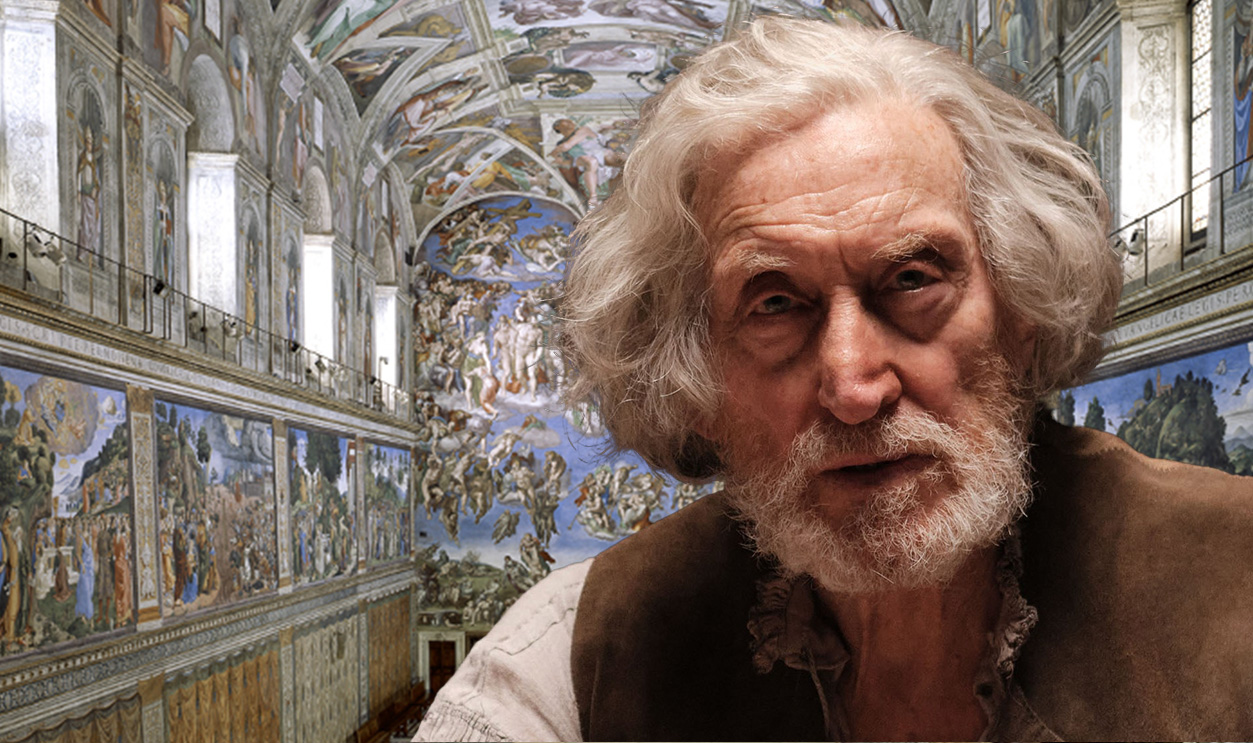
What Does The Word Mean?
"Fresco" is Italian for "fresh". The word likely refers to the fact that the paint is applied when the plaster is freshly wet. The second kind of fresco painting is known as "secco," which means "dry" in Italian; this refers to the fact that the lime plaster is dry when the paint is applied. Artists using the latter method use egg, oil, or water to apply the pigments to the surface.
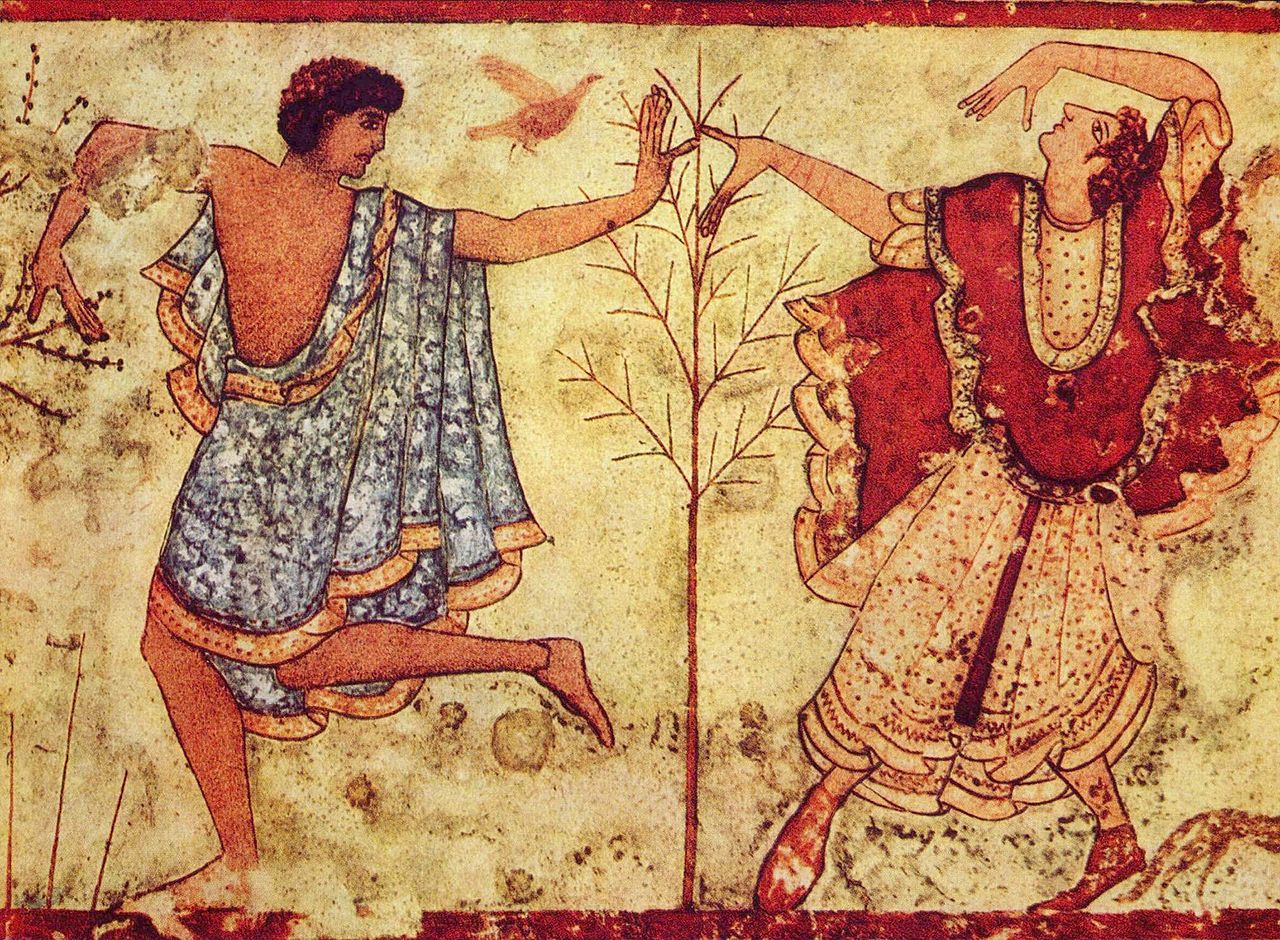 Unknown author, Wikimedia Commons
Unknown author, Wikimedia Commons
The Buon Fresco Controversy
Much debate in the art world surrounding frescos concerns the Spanish method of fresco painting. Buon fresco, which involves chemically fixing the paint to the wall (with glue or other adhesive), can be considered a legitimate fresco. The method began in 15th-century Florence but gained prominence in Spain.
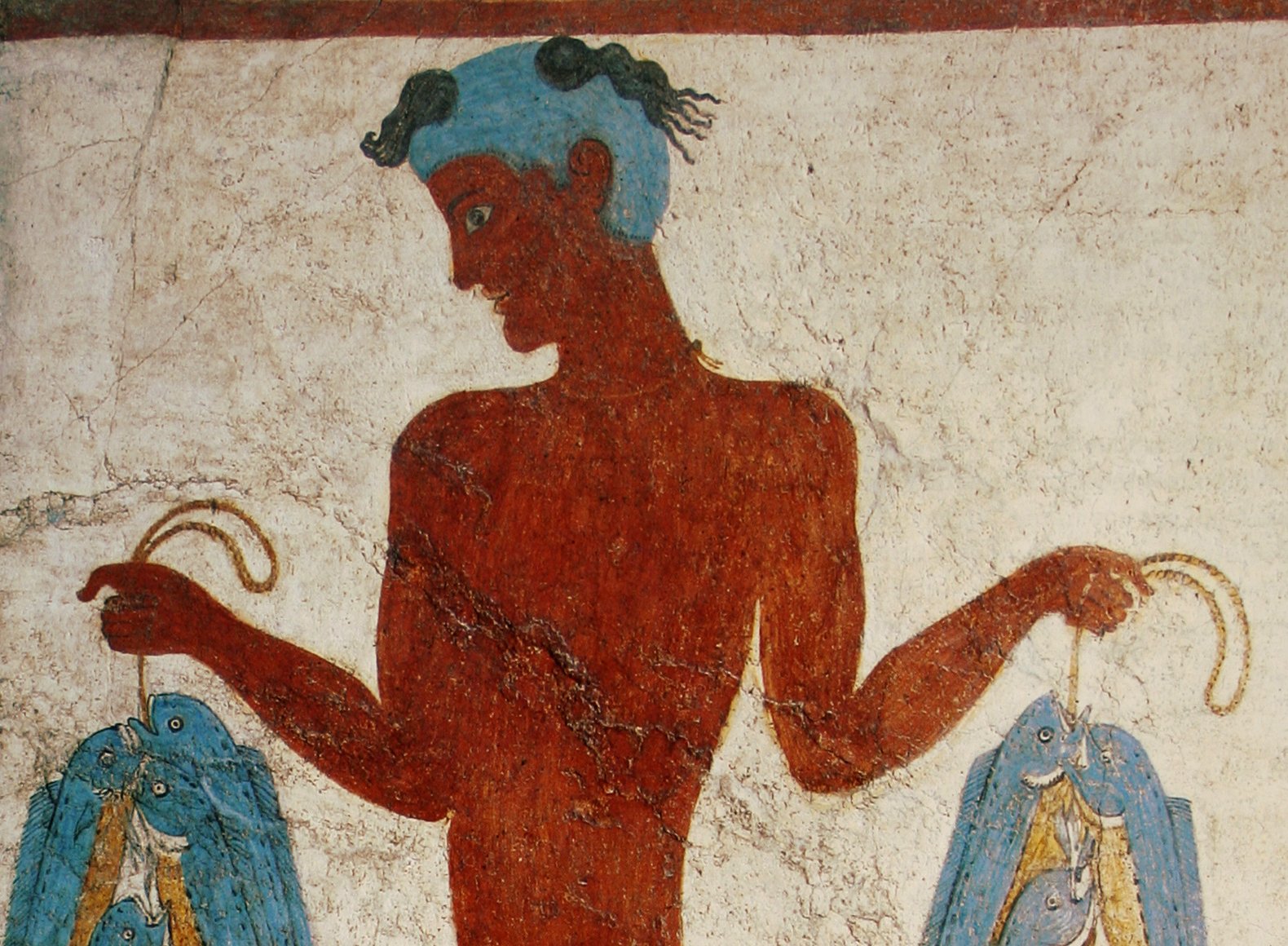 Unknown author, Wikimedia Commons
Unknown author, Wikimedia Commons
The History Of Frescoes
Before we dive into some of the world's most famous fresco paintings crafted by some of our most famous painters, including Michelangelo, let's explore the history of frescoes and learn where this ancient technique began.
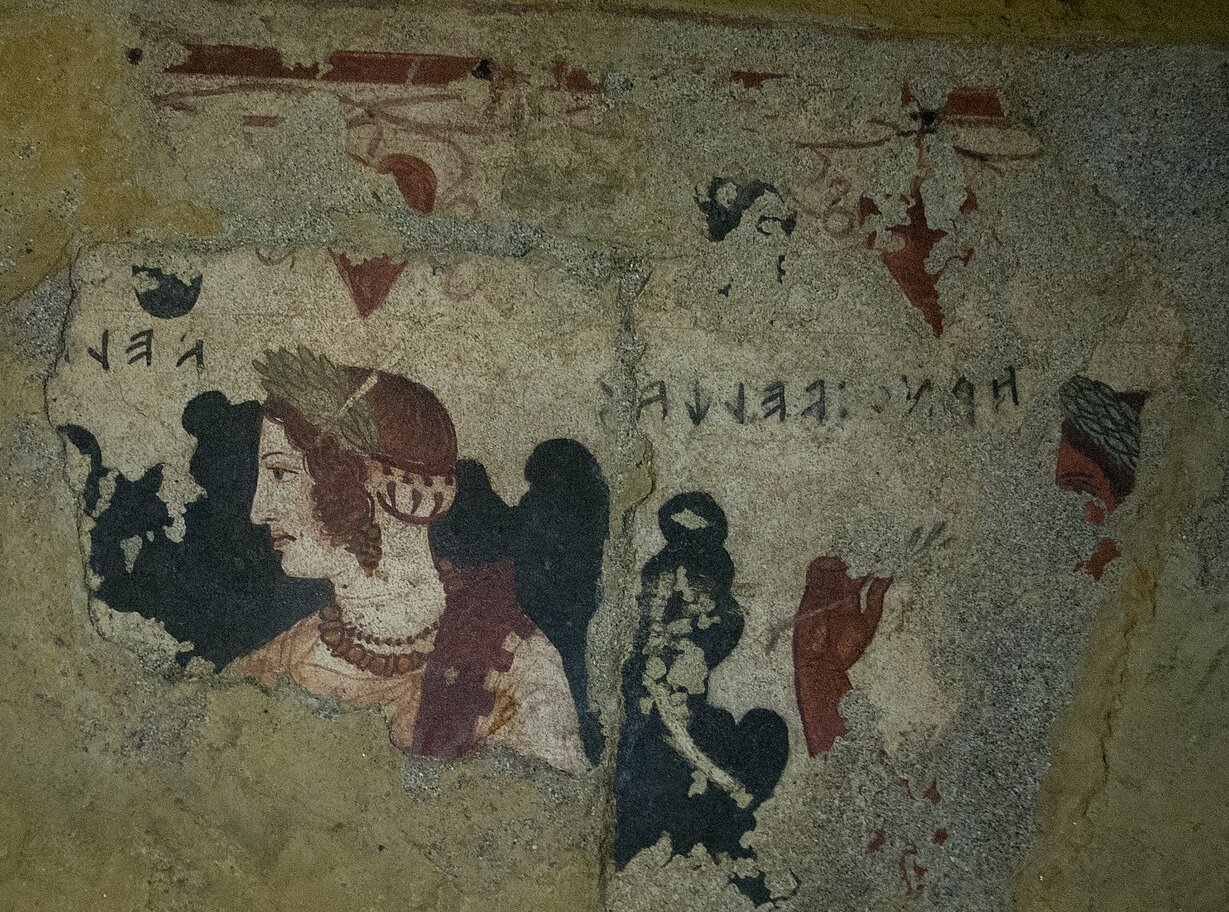 Robin Iversen Rönnlund, CC BY-SA 3.0, Wikimedia Commons
Robin Iversen Rönnlund, CC BY-SA 3.0, Wikimedia Commons
The World's First Known Frescoes
Frescoes originated in Ancient Egypt. In 2014, archaeologists discovered the first known fresco emblazoned on a tomb in the Ancient Egyptian city of Hierakonpolis, or "City of Hawks". Specifically, archaeologists uncovered an ancient tomb in Nekhen that dates back to 3500-3200 BC; surrounding the tomb were painted murals—the world's first known frescoes.
The Investiture Of Zimri-Lim
Another incredible ancient fresco dates from Mesopotamia and was discovered in the Royal Palace of Mari (in modern-day Syria), in 1935 by French archaeologist André Parrot. The Investiture of Zimri-Lim depicts the Mesopotamian goddess of war, Ishtar, giving a divine blessing and presenting the rod and ring of kingship to the Mesopotamian ruler, Zimri-Lim.
The Investiture Of Zimri-Lim (Cont'd)
During a great fire at the Palace of Mari in 1760 following the sacking of the city by Hammurabi, much of the original work of the Investiture of Zimri-Lim was destroyed. Still, painstaking restoration efforts by the Louvre Museum in Paris restored and repainted much of the lost work.
Minoan Frescoes
The Bronze Age civilization of the Minoans also produced some incredible fresco artwork, including the Bull-Leaping Fresco, in which individuals are depicted leaping over the back of a bull. Some of the oldest surviving frescoes of the Minoans were found on the Greek island of Santorini, some dating back to 1640-1600 BC.
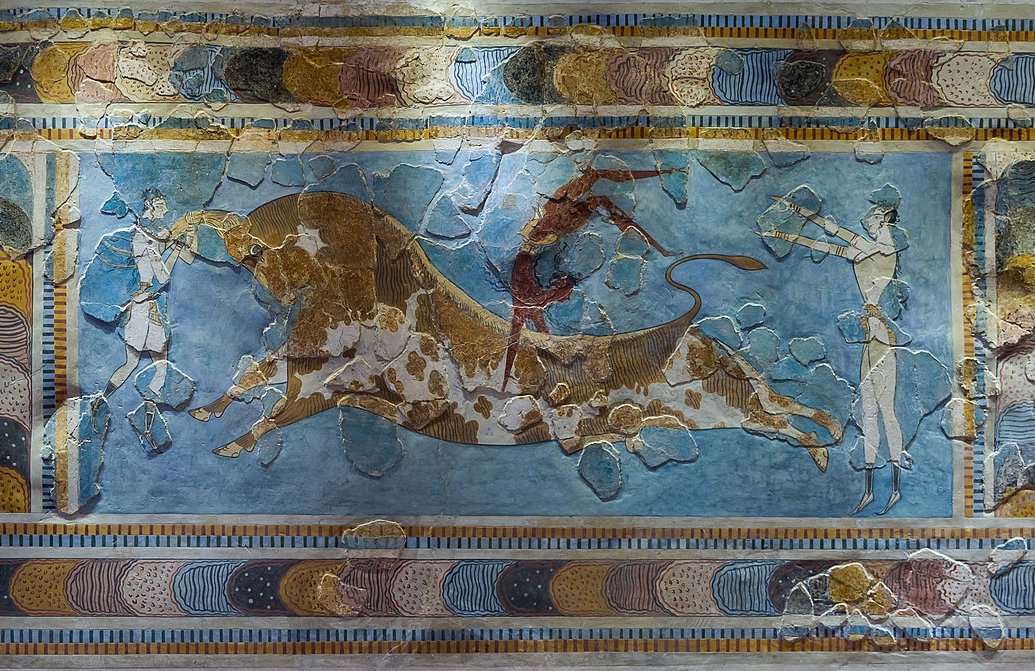 Heraklion Archaeological Museum, Wikimedia Commons
Heraklion Archaeological Museum, Wikimedia Commons
The Tomb Of The Diver
Another famous ancient fresco is the Tomb Of The Diver from Ancient Greece. In it, a lone diver is seen leaping into a pool of water. Although this fresco doesn't provide much context, it is thought to date back to 470 BC.
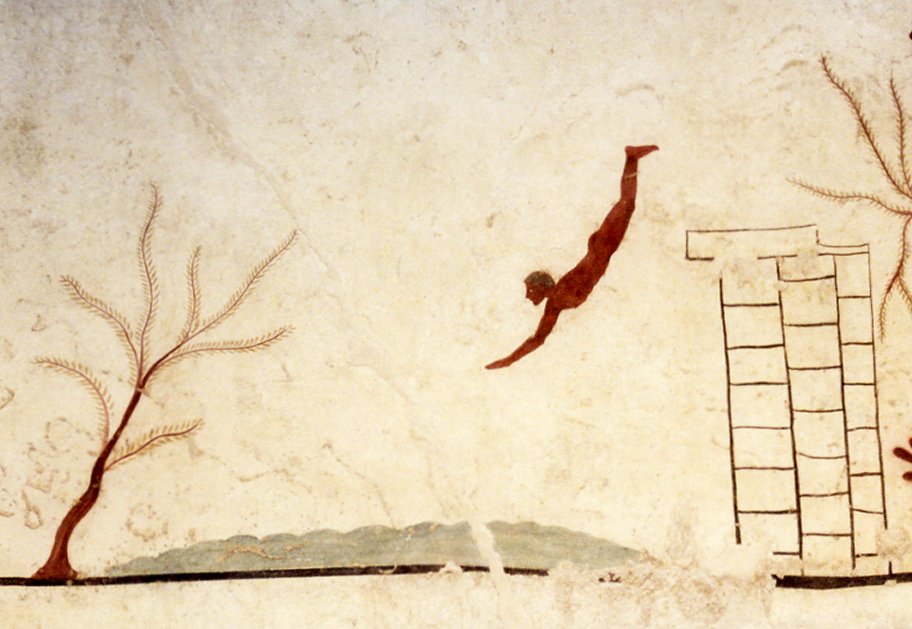 National Archaeological Museum of Paestum, Wikimedia Commons
National Archaeological Museum of Paestum, Wikimedia Commons
Frescoes Weren't Just Used In Europe And The Middle East
Other early-period frescoes appeared in Ancient India and were painted in cave temples like the Ajanta Caves in Maharashtra. Buddhists carved 30 caves out of the rock, and India's oldest frescoes—thought to have been painted between 200 and 600 BC—can be found in these caves. The frescoes depict tales of the Buddha's life. The site was first discovered in 1819.
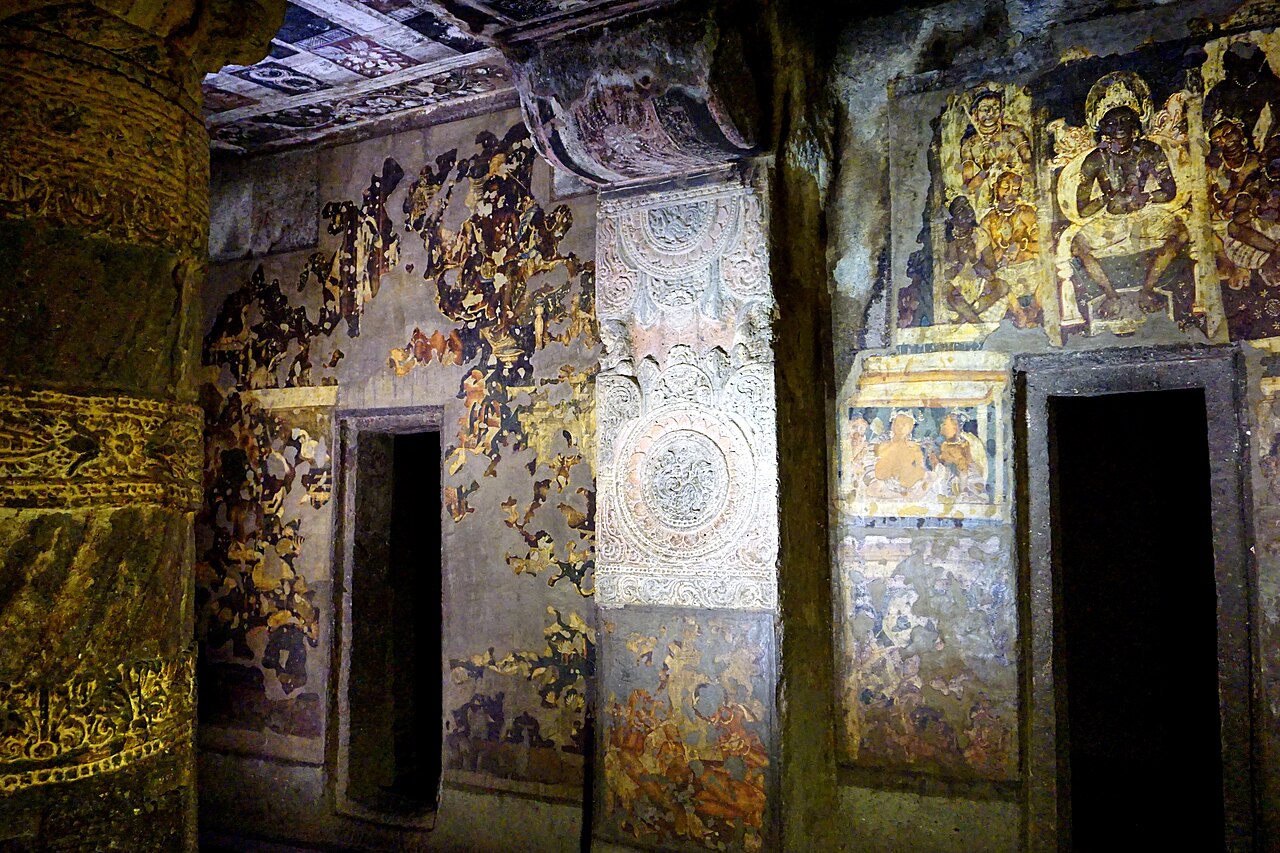 Photo Dharma, Thailand, CC BY 2.0, Wikimedia Commons
Photo Dharma, Thailand, CC BY 2.0, Wikimedia Commons
The Sigiriya Frescoes Of Sri Lanka
Sri Lanka is another ancient site of frescoes. The country is home to the Sigiriya fresco collection in the ancient rock fortress of Sigiriya. The frescoes, likely painted between 477 and 495 BC, depict women of the royal court showering flowers on the king and the rest of the court from high above. Some say these frescoes are the last remaining secular art from antiquity in Sri Lanka, although others argue they're Buddhist.
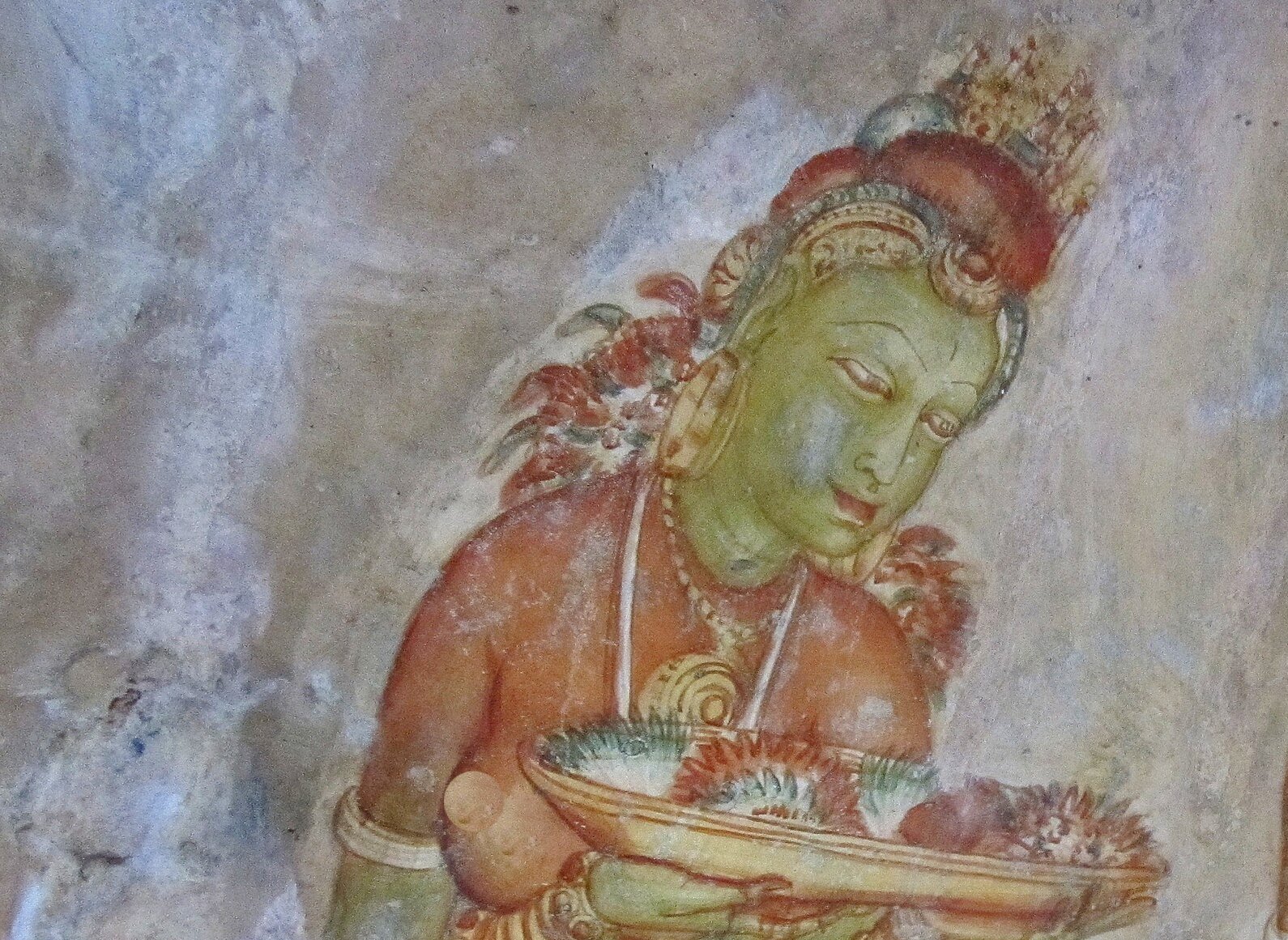 istolethetv, CC BY 2.0, Wikimedia Commons
istolethetv, CC BY 2.0, Wikimedia Commons
The World's Most Famous Frescoes
Now that you know a little about the history of frescoes and some examples of ancient frescoes, let's examine some of the world's most famous frescoes.
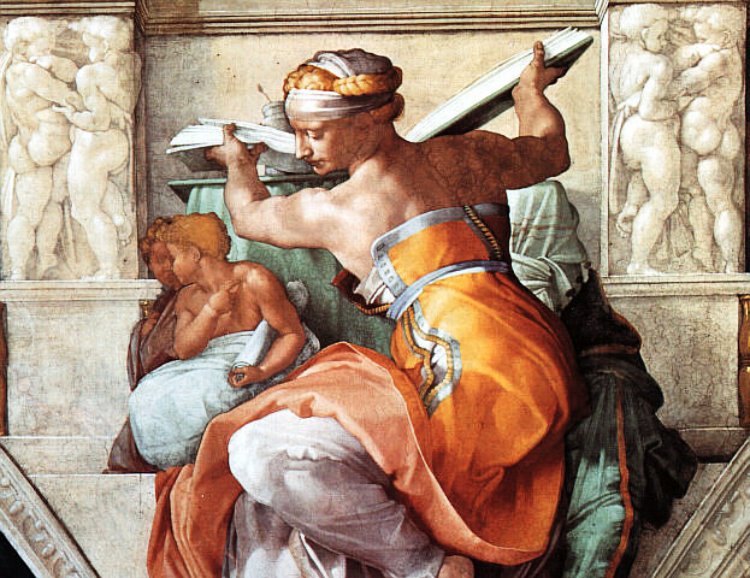 Michelangelo, Wikimedia Commons
Michelangelo, Wikimedia Commons
The Toreador
As mentioned earlier, the Bull-Leaping Fresco is one of the world's most complete and famous frescoes. Located on the upper portion of the east wall of a Minoan Palace in Knossos, Crete, it has been almost completely restored. Painted by an unknown author around 1450 BC, the Bull-Leaping Fresco is one of the most iconic pieces of Minoan art.
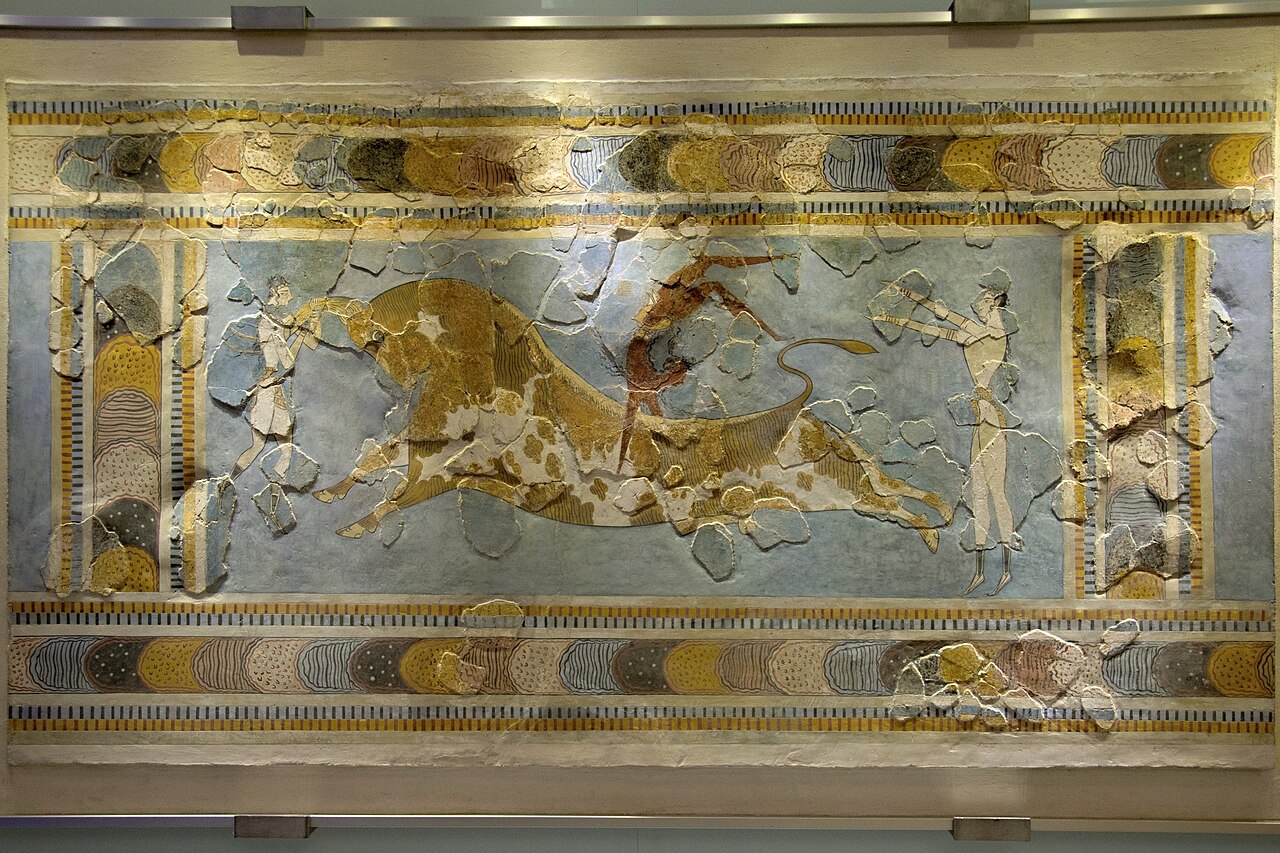 Zde, CC BY-SA 4.0, Wikimedia Commons
Zde, CC BY-SA 4.0, Wikimedia Commons
The Hagia Sophia Of Constantinople
One of the most famous frescoes is the Byzantine mosaic of Christ Pantocrator on the upper wall of the Hagia Sophia mosque in Constantinople. One of the most iconic images of Christ, the fresco features Christ with a golden crown and holding a bible. It's one of the oldest frescoes in Constantinople.
The Last Supper
There are two versions of the iconic Last Supper—one is a fresco painted by Domenico Ghirlandaio and housed in San Marco, Florence. The other (which you're probably most familiar with) is Leonardo Da Vinci's work, which is not a fresco but a modified technique that allowed Da Vinci to make changes later.
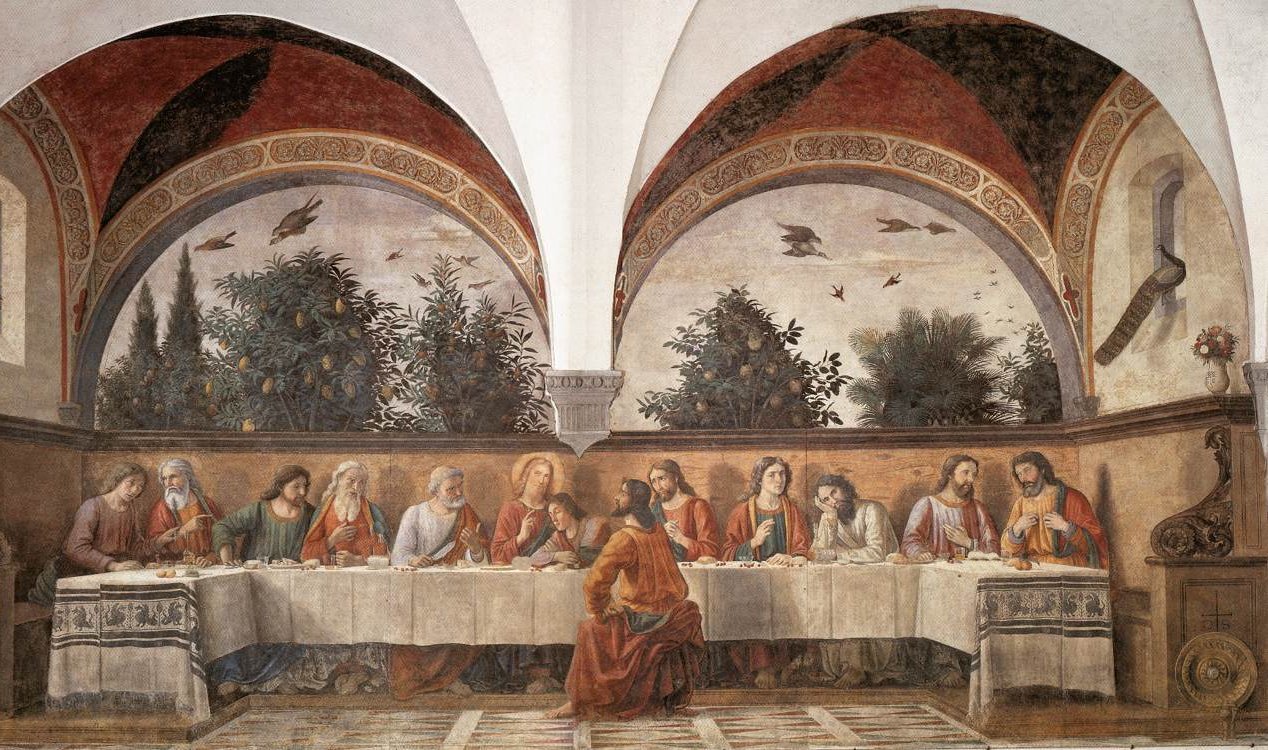 Domenico Ghirlandaio, Wikimedia Commons
Domenico Ghirlandaio, Wikimedia Commons
Christ Giving The Keys To St Peter
This fresco, of Jesus giving the keys to the Kingdom of Heaven to St Peter, represents the ability to forgive transgressions. It was completed between 1481 and 1482 and lies in the Sistine Chapel at the Vatican. Painted by Pietro Perugino, it's said that the King of Naples, Alfonso II, visited the artist, and he was subsequently added to the painting's left side.
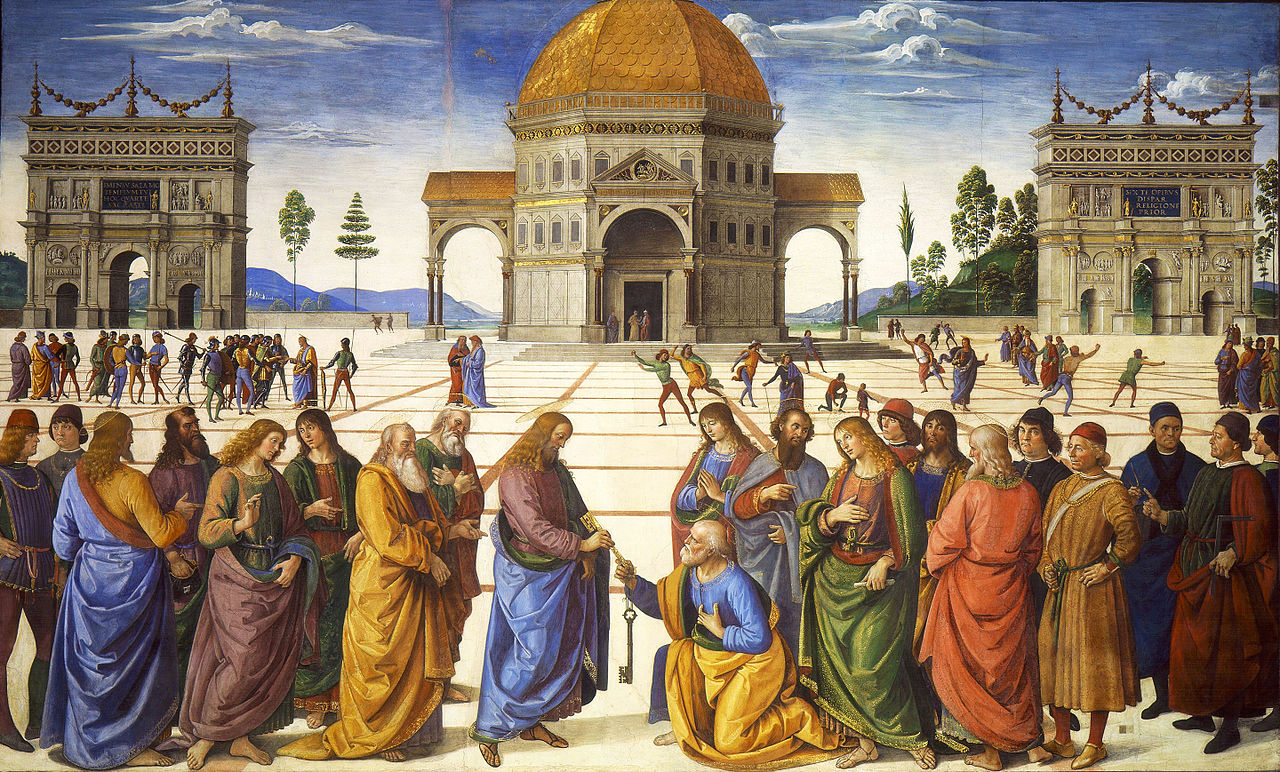 Pietro Perugino, Wikimedia Commons
Pietro Perugino, Wikimedia Commons
The Creation Of Adam
The Creation of Adam, painted by Michelangelo and completed in 1512, depicts God reaching out a hand to create man. It is located on the ceiling of the Sistine Chapel in Vatican City.
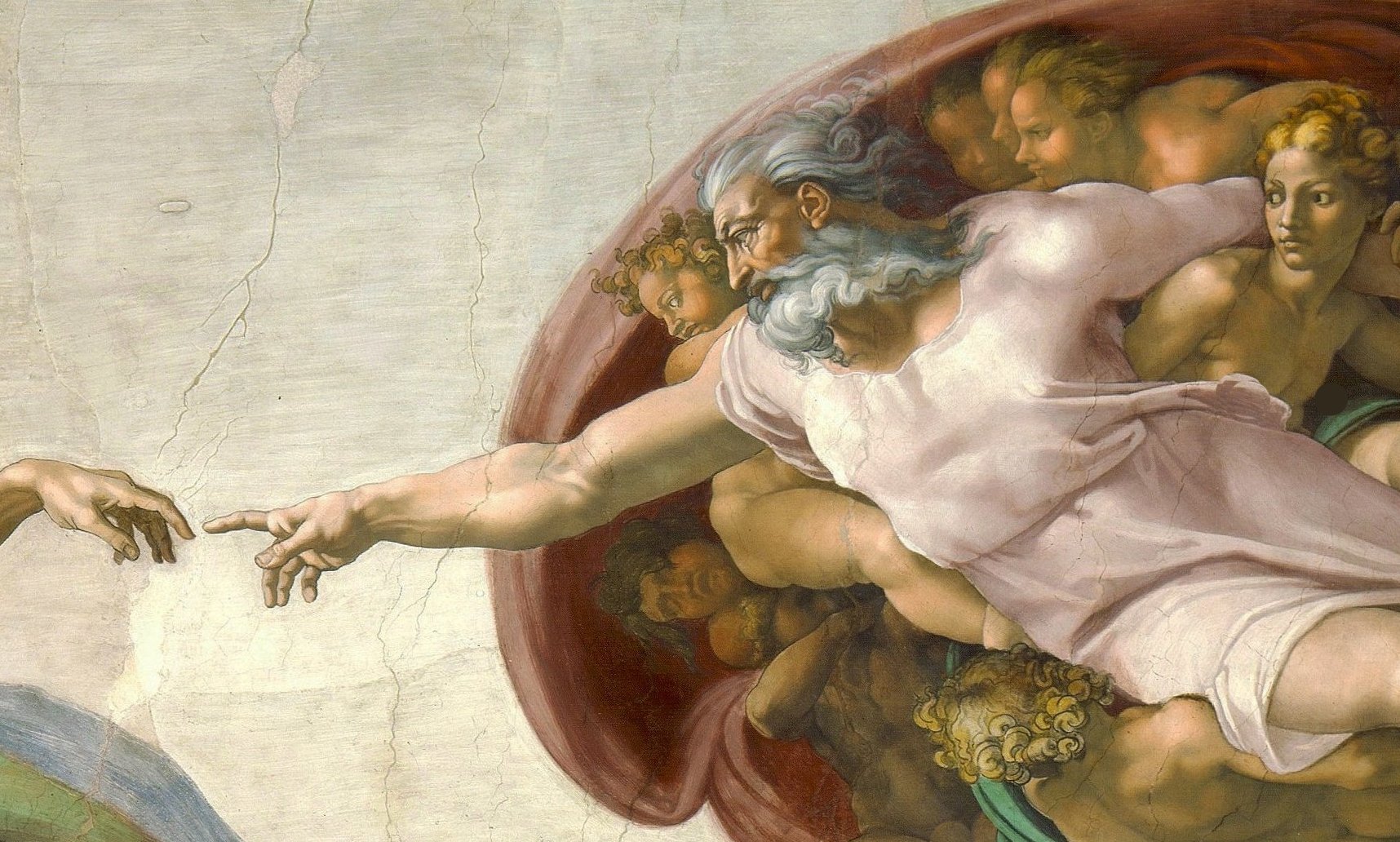 Michelangelo, Wikimedia Commons
Michelangelo, Wikimedia Commons
The Sistine Chapel Ceiling
Apart from The Creation Of Adam, the entire Sistine Chapel ceiling is one of the world's most famous frescoes, painted by Michelangelo, completed between 1508 and 1512, and covers an extraordinary 5,700 square feet.
Modern Fresco Art
While fresco painting is something of a lost art form—it has been since the 1960s—there are still a few fresco painters out there. Despite the tradition coming to prominence in Italy, several American artists ruled the fresco world in the 1980s and 1990s, including David Novros and James Hyde.
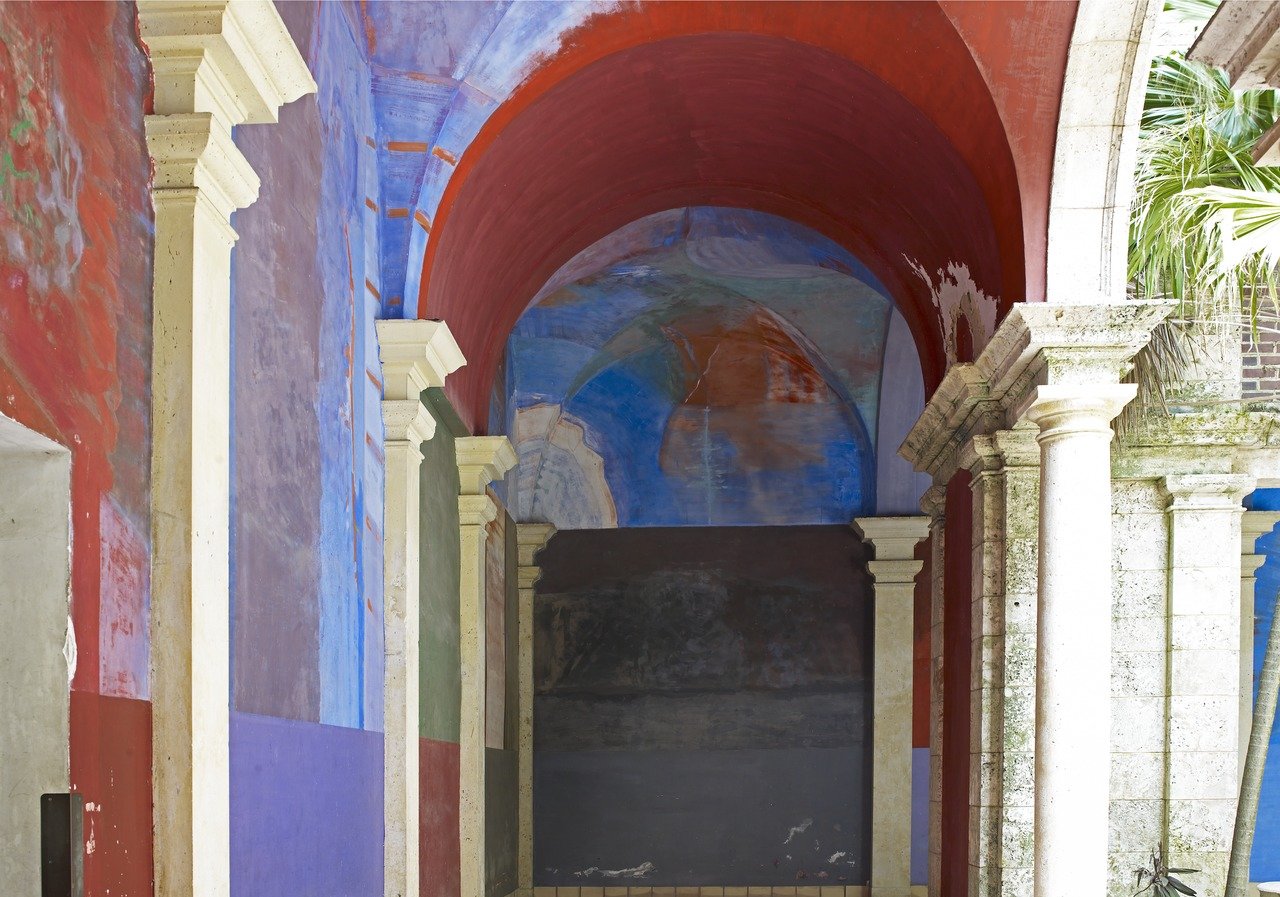 Carol M. Highsmith, Wikimedia Commons
Carol M. Highsmith, Wikimedia Commons
David Novros' Fresco Art
David Novros spent 50 years developing his fresco technique before being commissioned by Donald Judd, owner of 101 Spring Street in New York, to create a mural using it. Novros restored the painting in 2013.
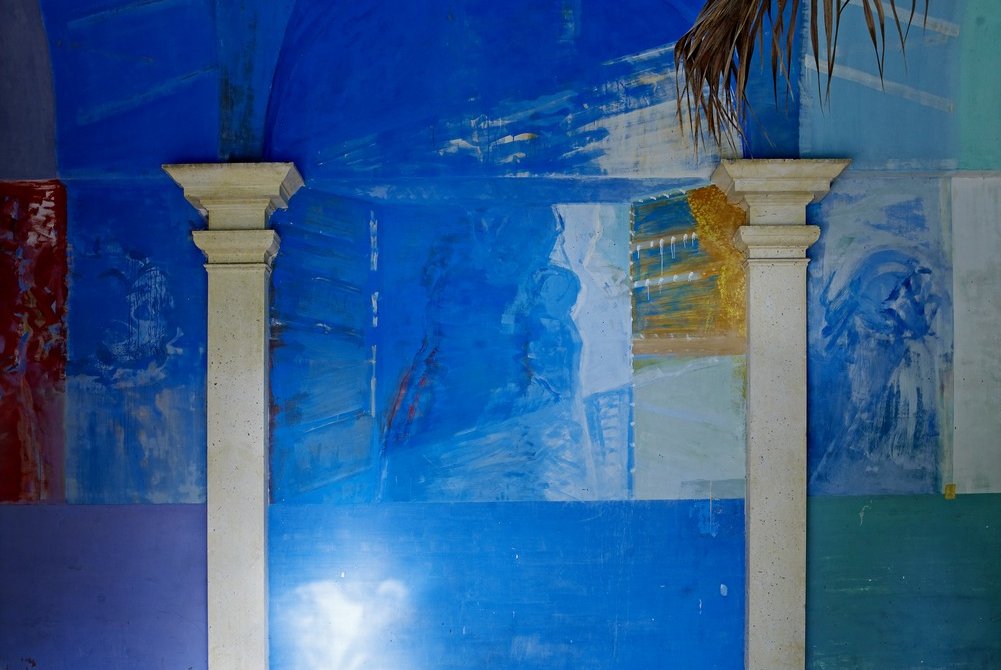 Carol M. Highsmith, Wikimedia Commons
Carol M. Highsmith, Wikimedia Commons
James Hyde's Fresco Art
James Hyde emerged in the mid-1980s after presenting his work at the Esther Rand Gallery in New York in 1985. He created frescoes on cast concrete arranged into panels. In 1991, Hyde debuted a new medium: massive blocks of Styrofoam, which ran counter to the original intent of fresco artwork, permanence.
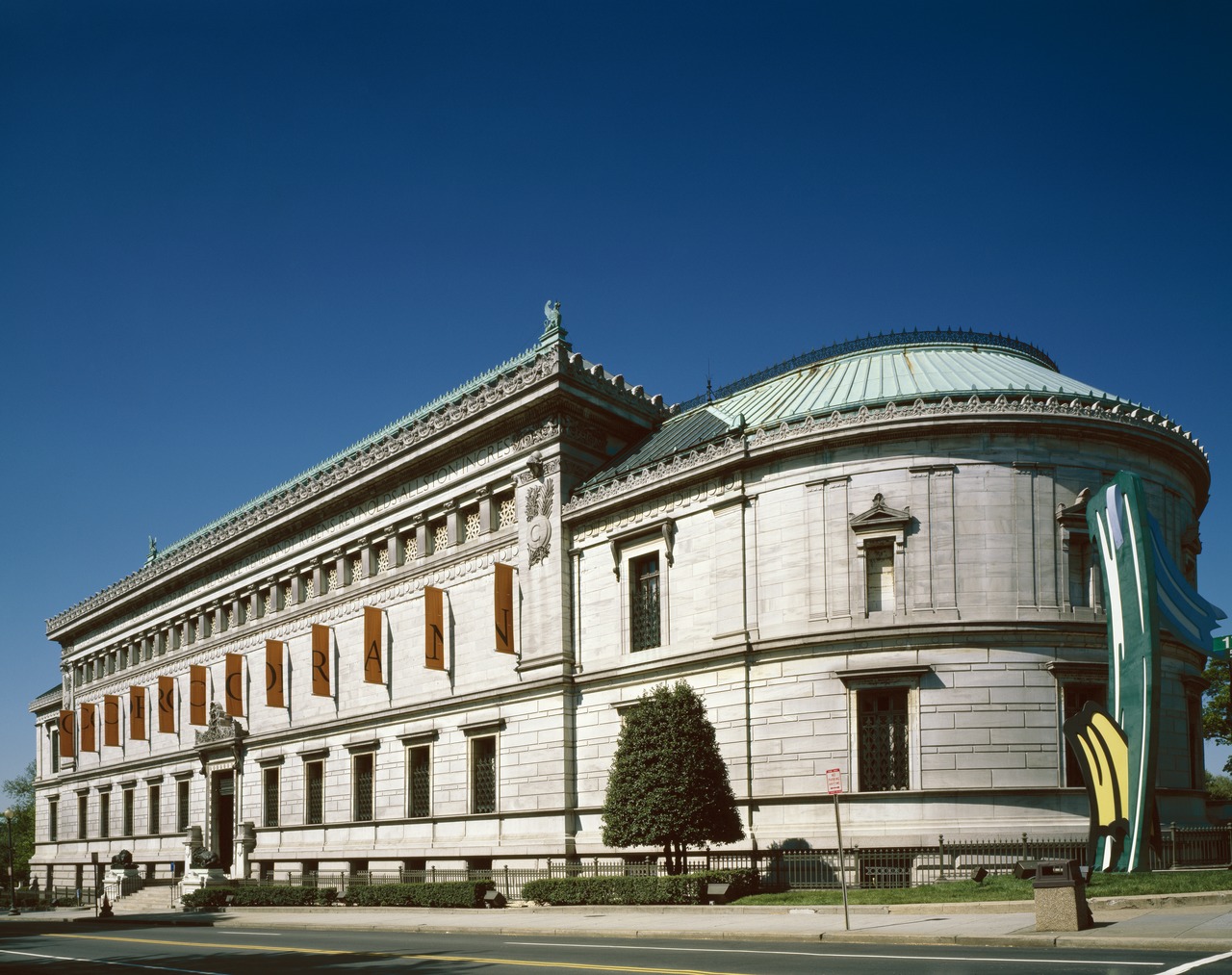 Carol M. Highsmith, Wikimedia Commons
Carol M. Highsmith, Wikimedia Commons
James Hyde's Fresco Art (Cont'd)
In 1993, Progressive Insurance commissioned Hyde to create an artwork using this Styrofoam method: four automobile-sized frescoes suspended from a brick wall. Hyde's work was part of constructing the 80-foot atrium in the company's Cleveland, Ohio headquarters.
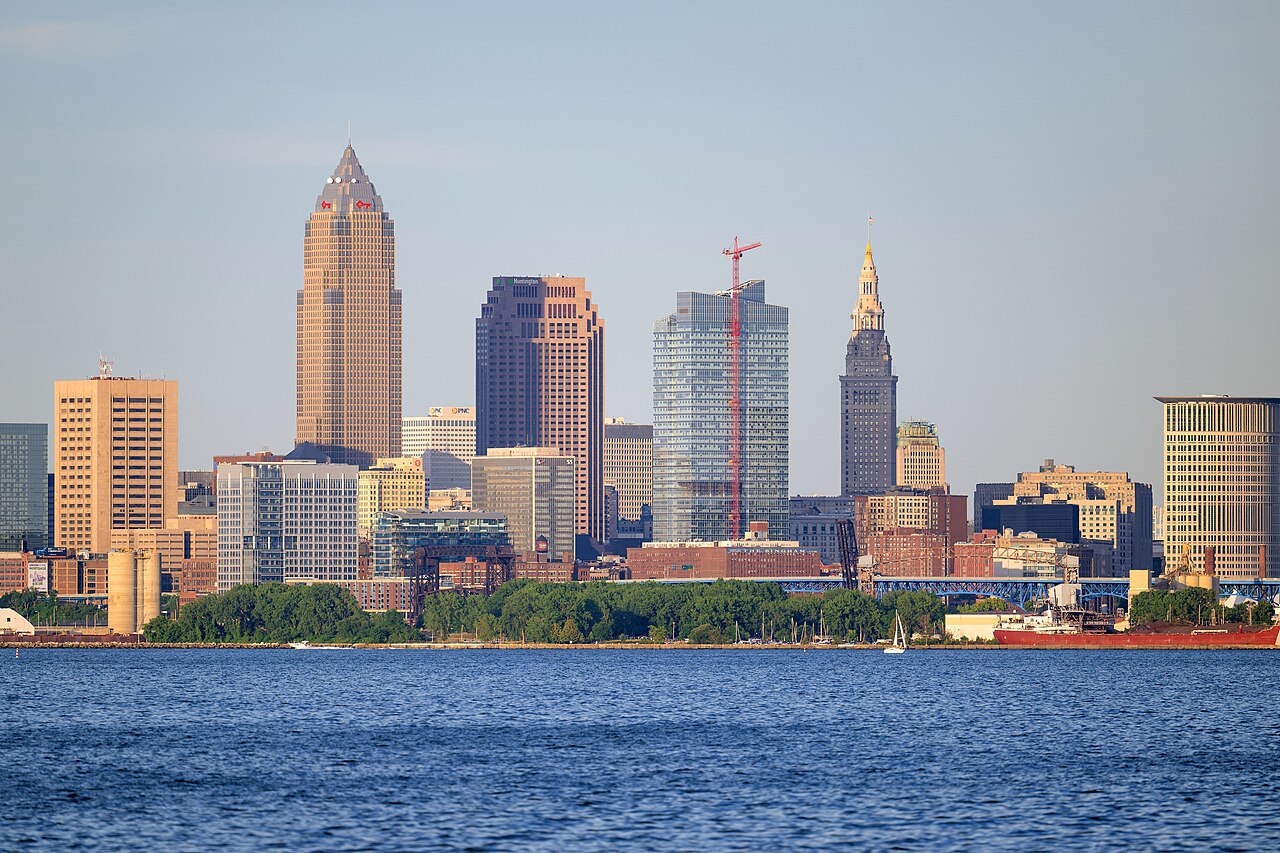 Erik Drost, CC BY 2.0, Wikimedia Commons
Erik Drost, CC BY 2.0, Wikimedia Commons
The St Ann Arts & Cultural Center
If you're searching for a place to view frescoes in the United States, the St Ann Arts & Cultural Center in Woonsocket, Rhode Island, is home to the largest collection of frescoes in the country. You can also view Prometheus, painted by Jose Clemente Orocozo in 1930, at Pomona College's Fray Dining Hall.
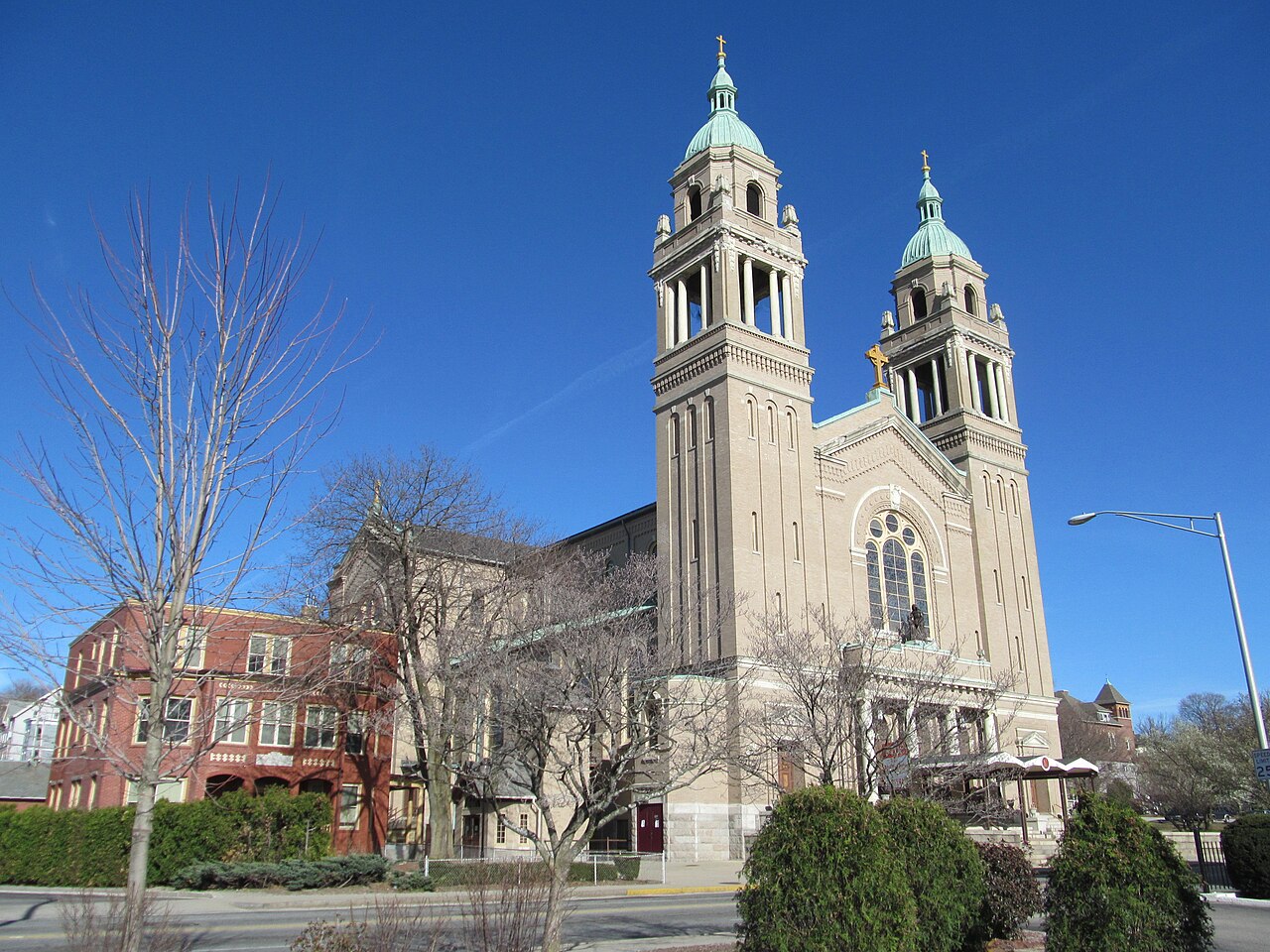 John Phelan, CC BY-SA 3.0, Wikimedia Commons
John Phelan, CC BY-SA 3.0, Wikimedia Commons
What Are The Advantages Of Fresco Painting?
If you're considering taking up fresco painting as an art form, the main advantage of the medium is its permanence. Fresco paintings can potentially last centuries without losing the original artwork's quality. Because of this permanence, artists are forced to think critically and design something extraordinary because it will be around for centuries.
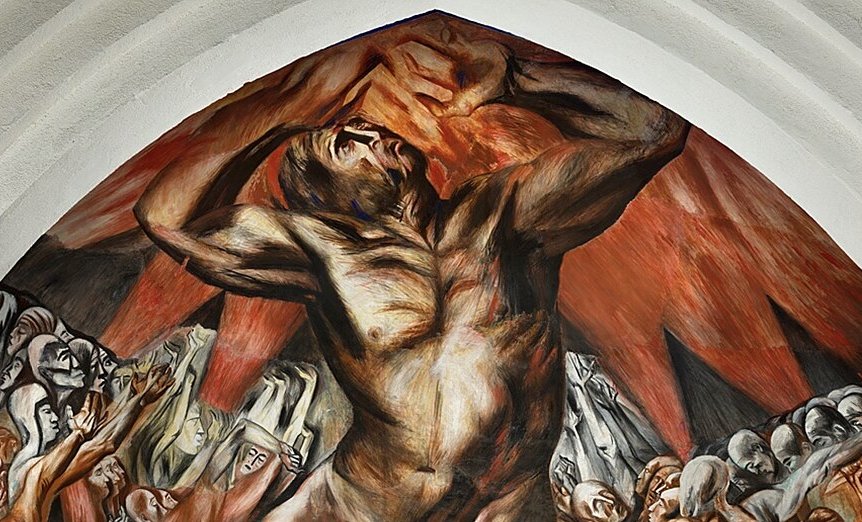 José Clemente Orozco, Wikimedia Commons
José Clemente Orozco, Wikimedia Commons
The Major Disadvantages Of Fresco Painting
Of course, fresco painting has disadvantages, including drying time. If you live in a humid climate, you could wait weeks, months, or even longer for the work to dry. Also, as frescoes are constrained by wall space, their scalability may be limited.
You May Also Like:
Facts About Priceless Works Of Art
Tormented Facts About History's Greatest Artists
Tormented Facts About Caravaggio, The Misunderstood Genius
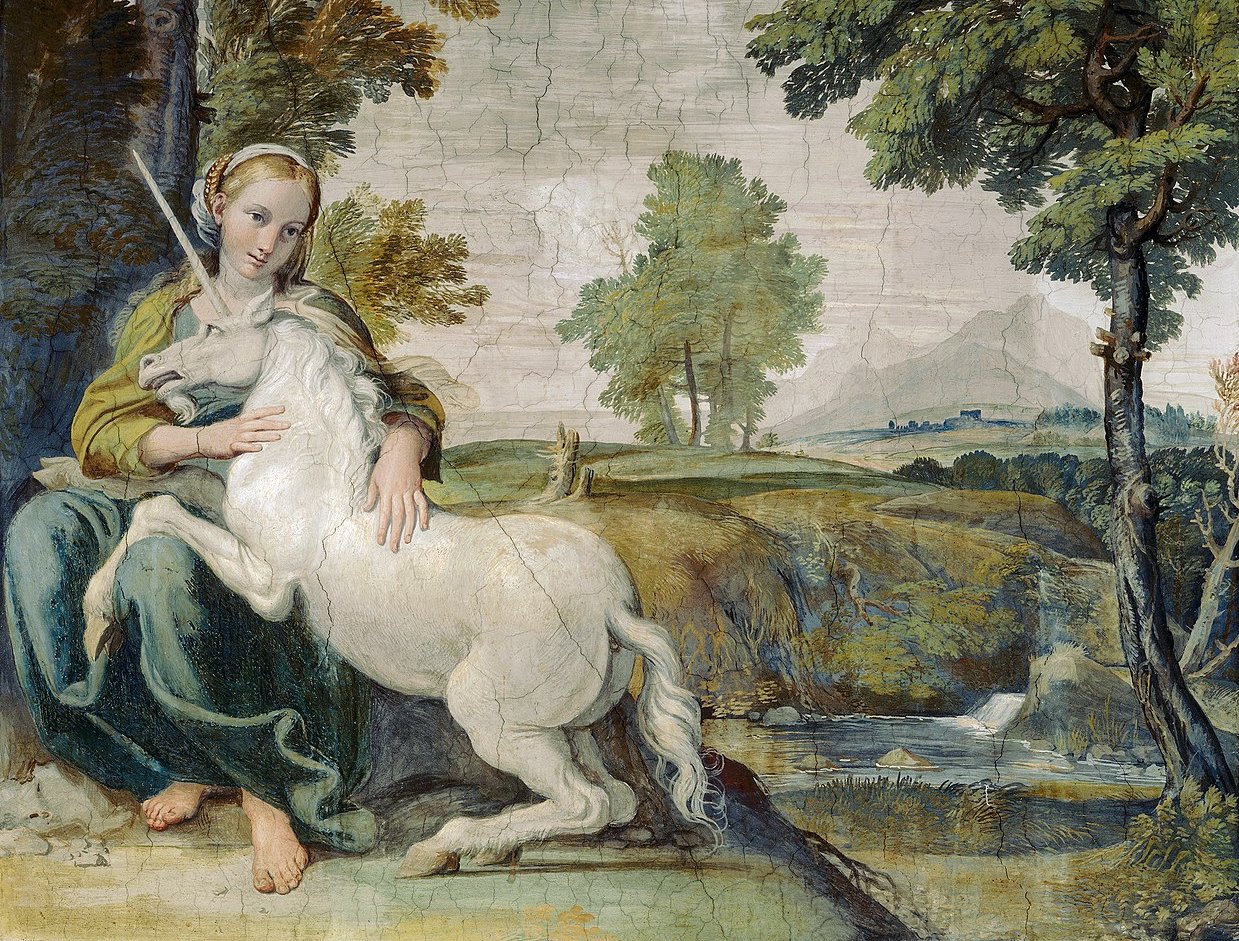 Domenichino, Wikimedia Commons
Domenichino, Wikimedia Commons

